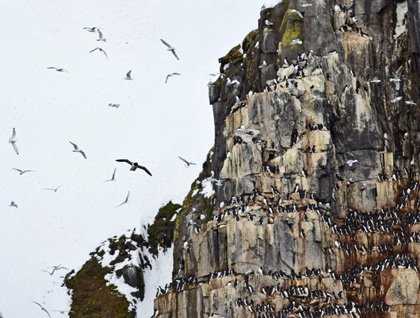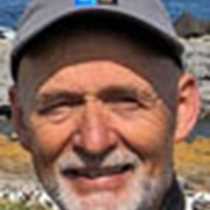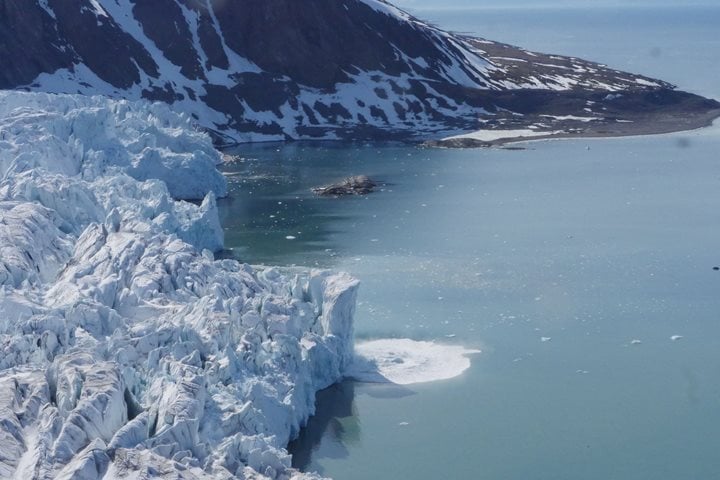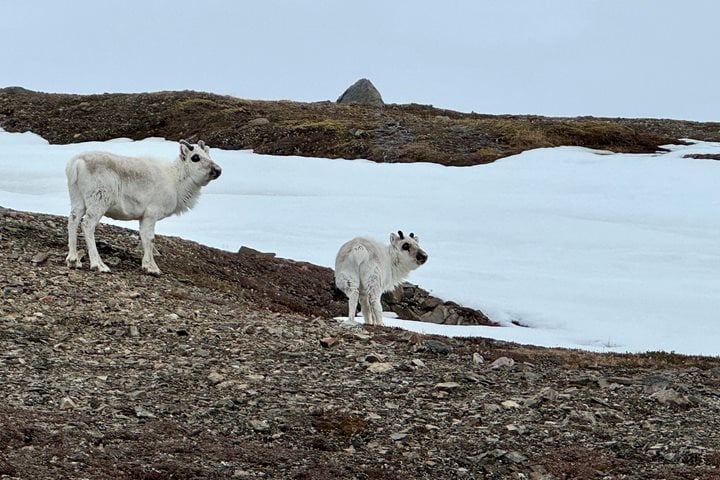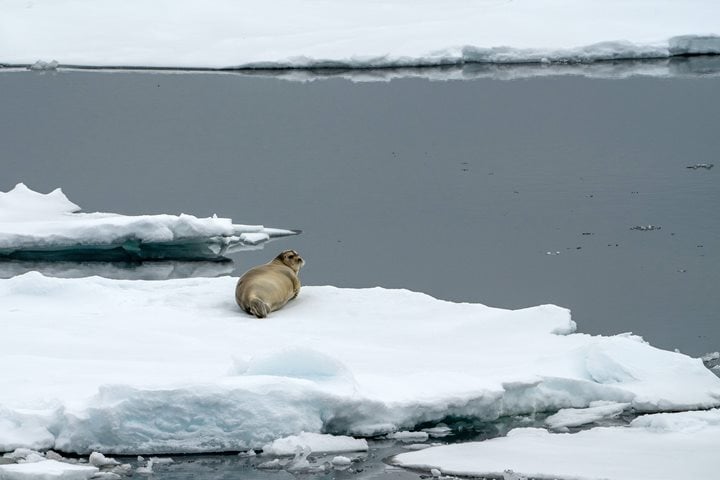Today we got an early wake-up call just as National Geographic Explorer was approaching Kapp Fanshawe, a quite unique spot for wildlife viewing on the west side of Hinlopen Strait. This Cape is known for a vast number of Brünnich´s guillemots and black-legged kittiwakes nesting on its cliffs. Those guests responding to the call at 6:30 had little reason to regret the view of tens of thousands of guillemots and kittiwakes on and up above these light-colored, weathered cliffs. A few glaucous gulls could also be seen.
Kapp Fanshawe is one of the greatest nesting cliffs on Spitsbergen Island and also a very scenic spot. We nosed in to look at the dramatic sheer cliffs of the Cape. The ledges are home to one of the greatest concentrations of Brünnich’s guillemots in Svalbard. At the height of the season there may be more than 200,000 individuals thronging the lower half of the cliffs. A similar number of black-legged kittiwakes nest there as well, mainly above the guillemots. We saw a great number of kittiwakes swarming close to the cliffs, and guillemots by the thousands were winging back and forth between the cape and the sea, some with fish in their beaks. When the chicks are only one-third grown, the adult males call each chick off the ledges, barely able to fly. Once down on the sea surface they can swim like a fish. Each male parent then leads his chick out into open water where they will spend the winter together, learning to dive, fish, and feed themselves. Many guests braved the chilly morning out on deck to take photos or just marvel at the incredible scenery and the myriad of birds.
After the spectacular birding we turned south, heading for Bjørnsundet (“Bear Sound”)—a classic polar bear territory. As we carried on, naturalist Carl Erik Kilander gave a presentation on Svalbard´s history, management, and nature.
Just as we were ready for lunch, sharp eyes on the bridge spotted a polar bear on ice off Kapp Frieden, just north of Bjørnsundet. Many a guest came out on deck to enjoy the sight of this magnificent animal in its true icy environment. We spent the afternoon at Wahlenbergbukta (“Wahlenberg Bay”), on the west side of Nordaustlandet. Here we found masses of pack ice as well as fast ice (flat sea ice connected to land). We saw a number of fresh polar bear footprints, but despite thorough scanning from the bridge, no more bears were spotted. Maybe this sunny, calm afternoon was just too warm for a polar bear to do anything but rest, and thus avoid being overheated? However, Svalbard is so much more than the polar bear, and many guests seemed excited about just being in the midst of so much ice, in this pristine wilderness. In such an extraordinary warm day for this latitude, the galley lined up a tasty barbecue out on the aft deck. What excitement to feel the warmth of the sun at more than 79 degrees north!
Another great day in the high Arctic was rounded off by naturalist Magnus Forsberg, who gave a broad insight into the greatest of northern predators, the polar bear.

